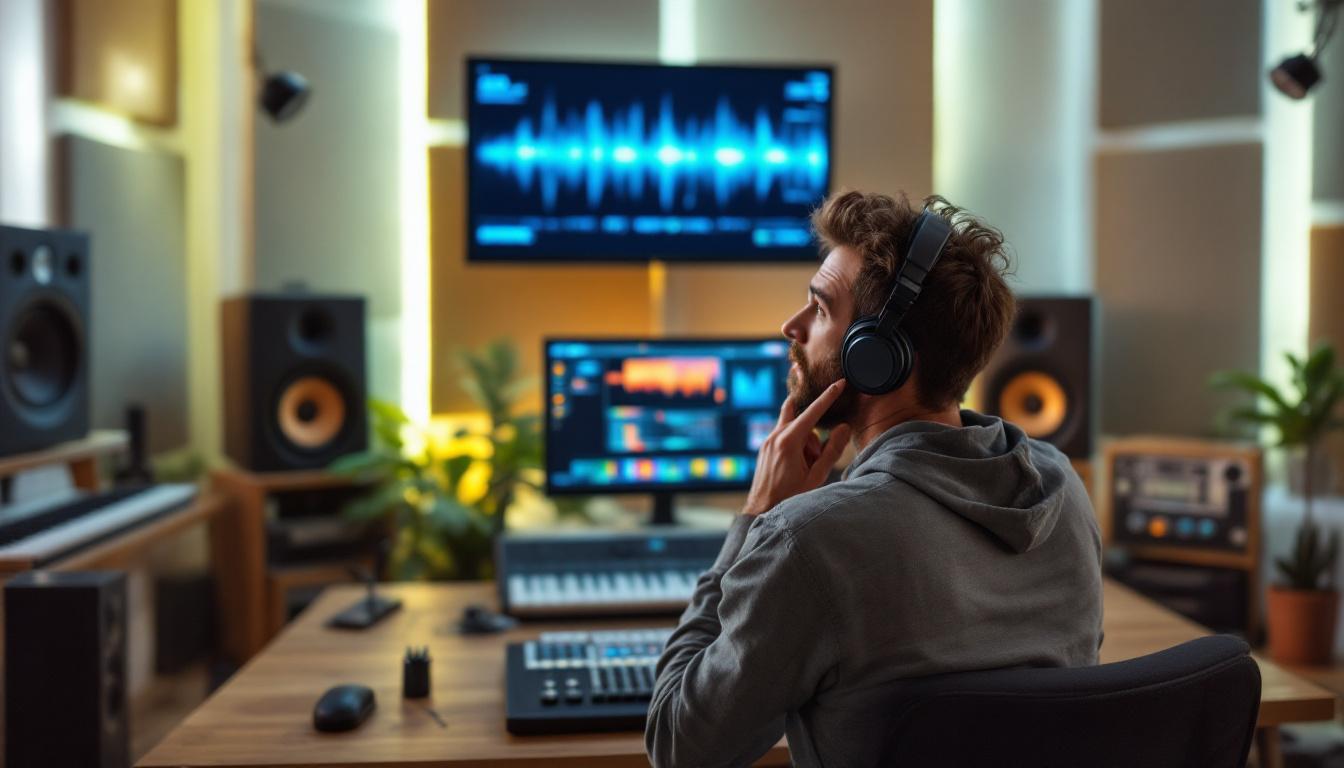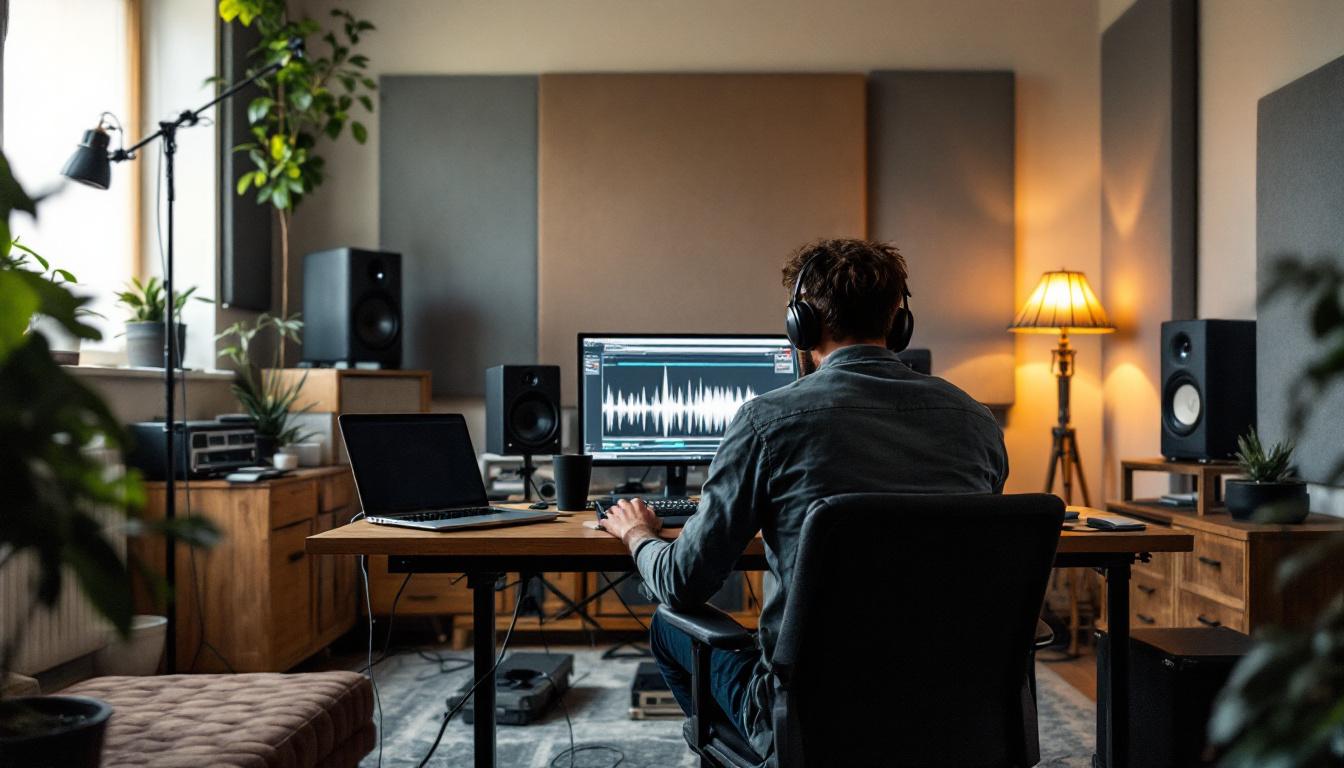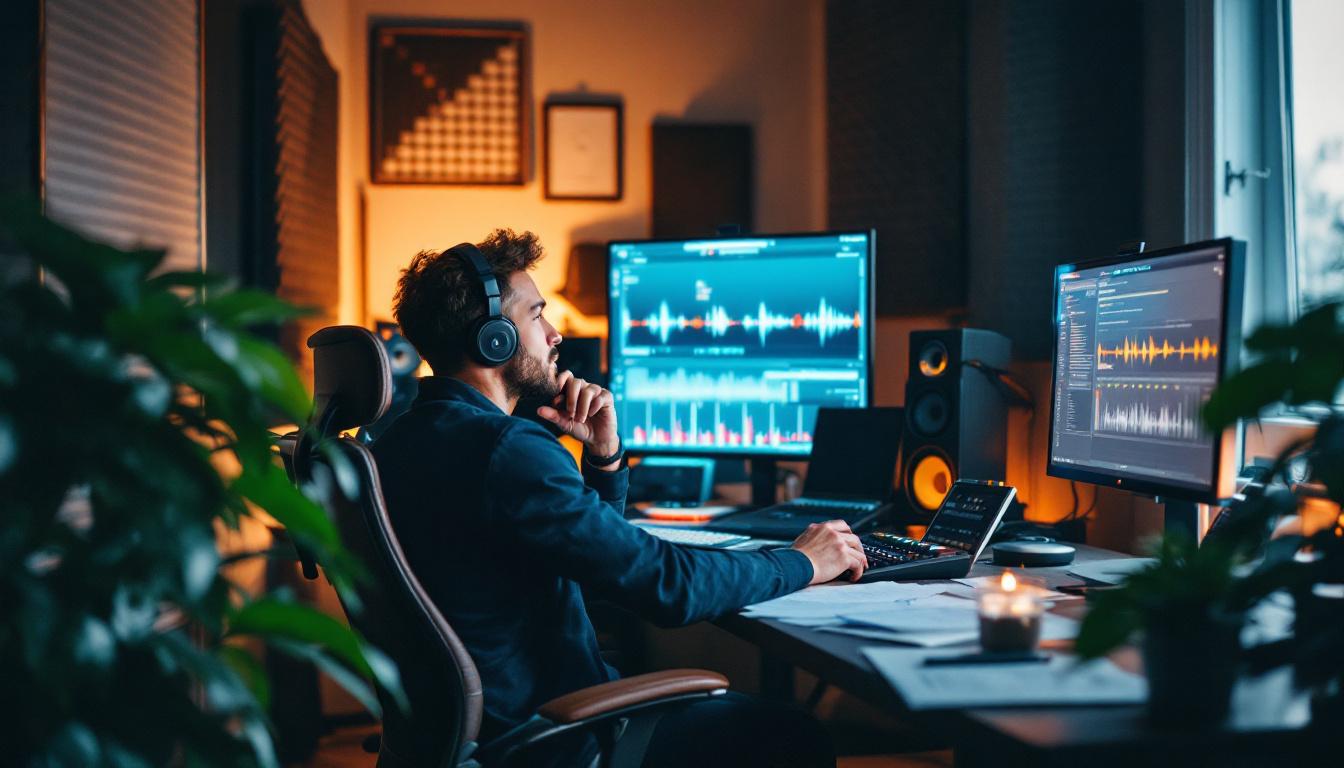Ever spent hours mixing a track, only to jump in your car or listen on headphones and think, “What happened? This sounds completely different!” If that sounds familiar, you’re not alone. Many producers blame their gear or plugins, but the real villain might be lurking in the shadows—your room. Yes, that very space you’ve been working in is secretly messing with your mixes through something called standing waves and room modes. Let’s unravel this mystery and figure out how to get your mixes sounding killer everywhere.
The Great Audio Deception: Why Your Room is Lying to You
Imagine this: you’re in your home studio, your monitors are set up just right, and your mix sounds fantastic. The bass is tight, the mids are clear, and the highs sparkle like a freshly polished disco ball. But then you hop in your car or put on your headphones, and suddenly your mix sounds like a muddy mess or a tin can recording. What gives?

The culprit is your room’s acoustics. Every room has its own unique way of interacting with sound waves. When you play music, sound waves bounce off walls, ceilings, and floors, creating complex patterns of interference. This interference can amplify some frequencies while canceling out others, leading to a skewed perception of your mix. Your room is, quite literally, lying to you.
Meet the Culprits: Standing Waves and Room Modes
To understand why your room is such a trickster, you need to know about standing waves and room modes. These are the main phenomena responsible for those frequency exaggerations and cancellations.
Standing Waves occur when sound waves reflect between two parallel surfaces, like opposite walls, and interfere with each other. At certain frequencies, the waves align perfectly to create zones of high pressure (peaks) and low pressure (nulls) in the room. This means some spots will have booming bass while others might have almost none.
Room Modes are the specific frequencies at which these standing waves occur, determined by the dimensions of your room. Each room has its own set of modes based on length, width, and height. These modes cause uneven frequency response, especially in the low end, making it tough to get a balanced mix.
But the challenges don’t stop there. The materials in your room also play a significant role in how sound behaves. Hard surfaces like concrete, glass, and wood reflect sound waves, while softer materials such as carpets, curtains, and acoustic panels absorb them. This interaction can further complicate your mixing environment, creating a scenario where certain frequencies are exaggerated or diminished based on the materials present. For instance, a room filled with hard surfaces may produce a bright, harsh sound, while a heavily carpeted room might dull the highs and muddy the lows.
Moreover, the placement of your monitors and listening position can dramatically influence your perception of sound. If your monitors are too close to a wall, for instance, you may experience an increase in bass response due to boundary interference, leading you to believe your mix is bass-heavy when it may not be. Similarly, sitting in a room’s null point can cause you to miss vital frequencies altogether, making it crucial to find the optimal setup for your specific space. By understanding these factors, you can begin to take control of your room’s deceptive nature and work towards achieving a more accurate mix.
Visualizing the Invisible: How Standing Waves and Room Modes Work
It’s hard to fix what you can’t see, so let’s paint a picture. Imagine you’re in a small rectangular room. When your bass frequencies hit a certain note, the sound waves bounce back and forth between the front and back walls. At specific frequencies, the waves line up perfectly, creating a standing wave.
This standing wave creates a pattern of “hot spots” where the bass is louder and “dead spots” where it almost disappears. Walk around your room and you might notice the bass sounds different depending on where you stand. That’s the standing wave playing tricks on your ears.
Room modes are like the room’s “favorite” frequencies. They’re determined by the room’s size and shape. For example, if your room is 4 meters long, you’ll get a fundamental mode at around 43 Hz (calculated by the speed of sound divided by twice the room length). Harmonics of this frequency will also cause peaks and nulls.
Understanding these concepts is crucial for anyone looking to optimize their listening environment, whether it’s for casual music enjoyment or professional audio production. Acoustic treatment can be employed to mitigate the effects of standing waves and room modes. This might include adding bass traps in the corners, using diffusers on the walls, or strategically placing furniture to disrupt the predictable paths of sound waves. Each of these solutions can help create a more balanced sound, allowing for a clearer and more enjoyable listening experience.
Here’s a simple diagram to help visualize:

Moreover, room modes can vary significantly based on the dimensions of the space, and even small changes in room layout can alter the acoustic characteristics. For instance, adding or removing a piece of furniture or changing the orientation of your speakers can shift the standing wave patterns. This is why many audiophiles spend considerable time experimenting with speaker placement and room arrangement to find that sweet spot where the sound feels just right. The interplay between sound waves and the physical space is a fascinating dance that can transform your auditory experience.
Why Untreated Rooms Are the Worst Mix Enemies
Most home studios and untreated rooms are acoustic minefields. Hard surfaces like drywall, hardwood floors, and glass reflect sound waves, while parallel walls encourage standing waves. Without treatment, your room exaggerates certain frequencies and cancels others, making your monitors lie to you.

This is why your mix sounds perfect in your studio but terrible elsewhere. Your ears are being fooled by the room’s acoustic fingerprint, not the actual sound of your mix.
Common Symptoms of Untreated Rooms
- Boomy or muddy bass: Standing waves cause some bass frequencies to be overly loud.
- Thin or weak bass: Null points cancel out bass frequencies in certain spots.
- Harsh or shrill highs: Reflections cause flutter echoes and comb filtering.
- Unbalanced stereo image: Reflections and modes affect spatial perception.
How to Outsmart Your Room: Acoustic Treatment Solutions
Good news: you don’t have to move to a concert hall to get accurate mixes. With some smart acoustic treatment, you can tame those lying room modes and standing waves.
Bass Traps: The Heavy Hitters
Bass frequencies are the hardest to control because they have long wavelengths. Bass traps are thick, dense absorbers designed to soak up these low frequencies and reduce standing waves.
Place bass traps in the corners of your room where bass tends to build up. This simple step can dramatically smooth out your low end and reveal the true sound of your mix.
Acoustic Panels: Absorbing Mid and High Frequencies
Acoustic panels are used to absorb mid and high frequencies, reducing reflections and flutter echoes. Place them on walls at first reflection points (the spots where sound first bounces off walls) to improve clarity and stereo imaging.
Room Layout and Monitor Placement
Sometimes, the best treatment is strategic placement. Avoid placing your monitors too close to walls or corners, as this can exaggerate bass. Experiment with positioning and listen carefully to find the sweet spot where your room lies the least.
Also, try to sit at about 38% of the room length from the front wall—this is often a good starting point to avoid nulls and peaks caused by room modes.
Additional Tips for Dealing with Room Modes and Standing Waves
Besides treatment and placement, here are a few other tricks to keep your mixes honest:
- Use reference tracks: Compare your mixes to professionally mixed songs to spot inconsistencies.
- Check mixes in multiple environments: Car, headphones, earbuds, and other rooms.
- Use measurement tools: Room EQ Wizard and measurement microphones can help identify problem frequencies.
- Consider room correction software: Some plugins can compensate for room anomalies, but they’re no substitute for physical treatment.
Why Understanding Your Room Makes You a Better Producer
Knowing that your room is lying to you is the first step toward better mixes. When you understand standing waves and room modes, you stop blaming your gear and start fixing the real problem.

With proper treatment and smart listening habits, your mixes will translate better across all playback systems. You’ll spend less time second-guessing and more time making music that sounds great everywhere.
Final Thought: Your Room is a Partner, Not an Enemy
Instead of fighting your room, work with it. Treat it, understand it, and use it to your advantage. Your ears will thank you, and your mixes will finally sound as good on the road as they do in your studio.
So next time your mix sounds off outside your studio, remember: it’s not your plugins or monitors – it’s your room, lying through its acoustic teeth.